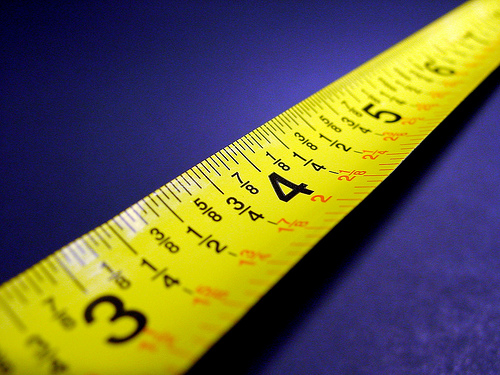
20 Jun Self – Assessment: 4 Simple Ways to Keep You on Track!
Self –Assessment: 4 Simple Tests to Keep You on Track
I can only imagine how frustrating it must feel to have a diagnosis like Parkinson’s Disease. Being told you have a progressive disease can be unnerving and make you feel like your body is out of your hands. Part of my role as a Physical Therapist is to teach people how to take some control over their disease. We know that exercise is one way that people can help slow the progression of the disease and fight against the symptoms of Parkinson’s. But how can you tell if you’re winning the battle?
I try to give everyone who works with me some simple ways to monitor their function through tests called “outcome measures” that everyone can easily perform at home to check regularly and give them back some control and awareness of how they are moving over time. These tests have all been proven to monitor physical function and can be tested within most home environments. I want you all to feel like you have the keys to monitor your own symptoms and take charge back over the disease. You can use these tests to see how you function on different medications, at different times of day, with changes to diet and new exercise routines. Feel free to share this information with your health care providers in order to keep them informed as well.
The four tests below are easily performed at home and should be performed every 3 months. The numbers in bold lettering will help you compare to see when you have made significant improvements and whether you are at risk for falls. Use the Self-Assessment tracker provided to log your progress over time. Hopefully, you can use these tests to see improvement in function over time with optimized medications, nutrition and exercise!!!
*** Having a Loved One or Caregiver record times as you perform these tests is the best way to get quality measurements.
Self-Assessment Tracking Sheet
TESTS
Timed Up and Go:
Assesses your mobility, balance, walking ability and fall risk
Directions
– Stand from a kitchen chair, walk 10 feet, turn around, walk back and sit down as quickly and safely as possible
– Timing begins when you start to stand and ends when you sit completely into the chair.
Risk for Falls > 11.5 sec
Significant Change: 4.85 sec
5x Sit to Stand:
Assesses your leg strength and speed of transfers
Directions
–Sit with arms folded across chest and with back against the chair. Stand and sit 5 times as quickly as you can.
– Timing begins at “Go” and ends when the buttocks touches the chair after the 5th repetition.
Risk for Falls (age dependent)
- 60-90 y/o > 11.4 sec
- 70-79 y/o > 12.6 sec
- 80-89 y/o > 14.8 sec
Significant Change: 2.3 seconds or greater
10 meter walking speed:
Assesses your normal walking speed
Directions
-Walk without assistance 10 meters (32.8 feet) at a comfortable speed. The time is measured for the intermediate 6 meters (19.7 feet) to allow for acceleration and deceleration
-Start timing when the toes of the leading foot crosses the 2-meter mark.
-Stop timing when the toes of the leading foot crosses the 8-meter mark.
-Assistive devices can be used but should be kept consistent and documented from test to test
– Calculate your speed in total meters (6m) divided by time in seconds (m/s)
Significant Change: 0.18 m/s (0.6 ft/sec)
4 square step test:
Assesses your ability to step over objects forward, sideways and backwards
Directions
– Stand in square 1 facing square number 2 (see figure below). You are required to step as fast as possible into each square in the following sequence: 2, 3, 4, 1, 4, 3, 2, and 1
– Equipment required includes a stopwatch and 4 canes/broomsticks or place tape on the ground.

Average time: 8.73-12.56 sec
Increased risk for falls > Greater than 9.68 sec
Single Leg Stance Time
Assesses balance in standing
Directions
Stand on one leg with a timer starting when the opposite foot leaves the ground and ending when that foot returns to the ground.
Risk For Falls <10 sec


Noel Lopez
Posted at 02:19h, 03 JulyDefinitivamente estos ejercicios miden cienticamente la condición física en que uno se encuentra y mlde cuánto trabajo tienes que hacer para prolongar tu obtimo estado físico.
Graet tool, just what I was looking for. Now I will know which is the goal to achieve.
Thanks , you have made my life easier.
Nate Coomer
Posted at 08:52h, 01 NovemberThanks Noel,
Miss you in the clinic and hope all is well in your hometown.
Nate
Clyte
Posted at 08:13h, 31 OctoberThanks for these tracking parameters and for you Blog information.
In this self assessment:
==>What is the “Risk For Fall” metric for the 10 Meter walking speed?
Thanks,
Nate Coomer
Posted at 08:50h, 01 NovemberHi Clyte,
Unfortunately, the 10 Meter Walk Test does not correlate with falls or fall risk. The big thing to pay attention to with this measure is any change in walking speed greater than about a 1/2 a foot per second. This parameter shows how well you are keeping up your normal speed, which in turn, correlates to the size of your steps and overall movement.
The 5x Sit to Stand and Timed Up and Go, on the other hand, are able to assess risk for falls. So, doing all 3 of these tests on a recurring basis will do a nice job of giving you a well rounded view of how well you are doing.
Thanks for the question and let me know if you have any other thoughts.
Have a great day,
Nate